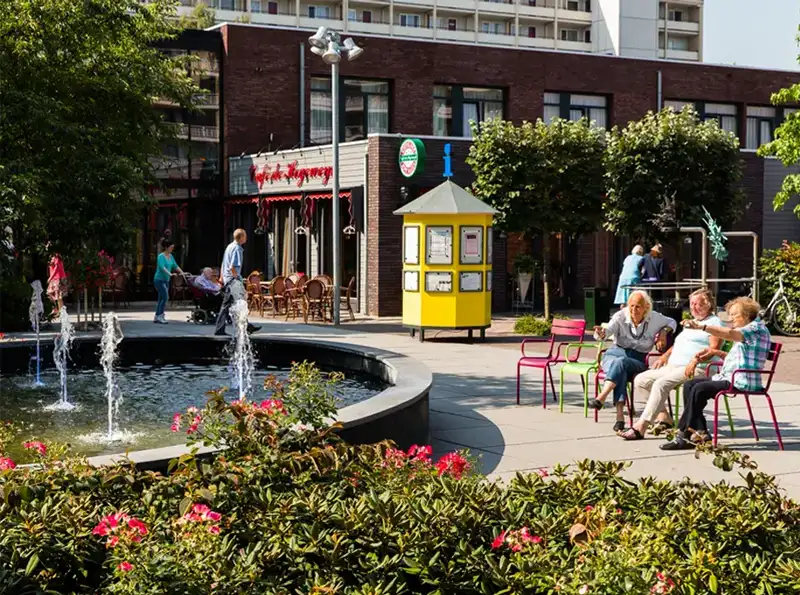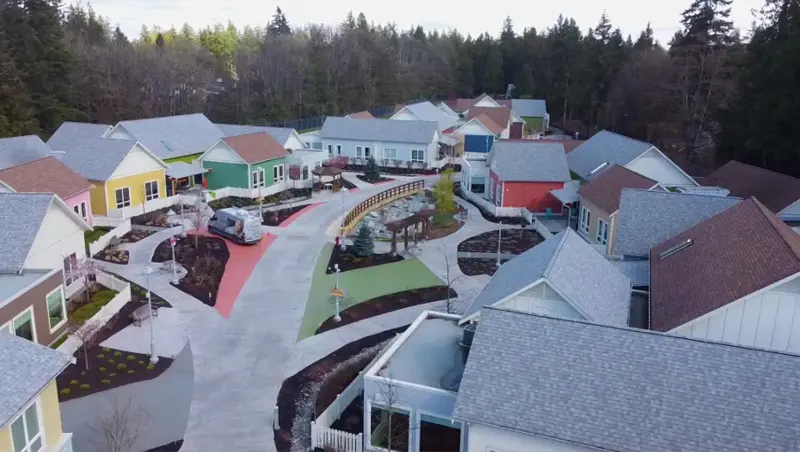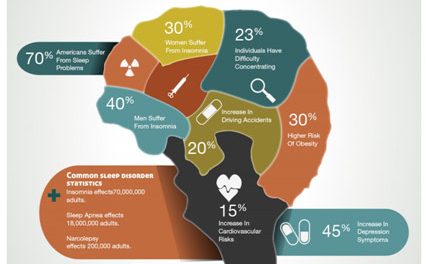Dementia, a chronic disease affecting over 55 million people globally, robs individuals of their cognitive abilities. When a patient is diagnosed with dementia, the disease is often treated like a death sentence as there is no cure. The life of a patient is turned upside down and they can no longer carry out daily functions and need to learn new methods to ensure their survival simply, a fate that no one deserves to suffer. However, the life of the patient can be made easier with the development of dementia towns across the world. Before talking about these new treatment methods, it is important to understand the difficulties faced by patients with dementia. Patients with dementia have difficulties in cognitive function, affecting their thinking, memory, and reasoning to the extent that the disease begins to interfere with their daily lives. Patients generally experience dementia as a side effect of other diseases like Alzheimer’s Disease, Huntington’s Disease, Parkinson’s Disease, or when they experience a brain injury. Dementia usually occurs in old age, and its effects are irreversible. Those affected experience difficulty expressing emotions, using language properly, and with memory, perception, and judgment. Since there is no cure for dementia, patients must find ways to make their lives easier while living with the disease.

While the outlook may seem bleak for patients diagnosed with dementia, advancements in treatments have provided the victims with a glimmer of hope. Usually, when a person is diagnosed with dementia, they are treated with medicines to slow down the effects of the disease in the beginning. When dementia reaches a stage where daily living becomes challenging, some patients transition to care facilities offering around-the-clock assistance. In 2009, Eloy van Hal developed the Hogeweyk, one of the first dementia towns in the Netherlands to replace traditional institutions built for patients with dementia. Van Hal believed traditional institutions imposed undue restrictions, disrupting patients’ familiar routines. Thus, he created a dementia town, a small community equipped with simple daily necessities like a grocery store, a barber shop, and a café to ensure the patients can continue the remainder of their lives with a sense of normalcy. Patients live in an apartment with their caretakers and have open areas like gardens to roam and enjoy their lives. All workers in the facility are trained in aiding patients diagnosed with dementia. Visitors can also visit and talk with their family members. Caretakers also ensure that the patients follow their treatments and dietary restrictions in their daily shopping and lives. Dementia towns are a humane way for a patient to spend the rest of their lives rather than in a small building with limited freedoms.

An interesting technique used in dementia towns is color theory, the study of how colors work together and affect our emotions. The towns use specific colors like red for plates, lime for the workers’ clothes, and black for areas they don’t want the patients to venture into. Each specific color invokes certain emotions and ideas in the minds of dementia patients. For example, red has been proven to increase the food intake of people with dementia, by 33% and is often used with patients who struggle to eat enough. In contrast, patients eat less food on blue-colored plates. Patients with dementia usually recognize and remember lime colors as they are distinct and stand out from others. Thus, workers in dementia towns wear lime-colored clothes, so that during times of trouble patients can easily identify and call them for help. Patients often imagine the color black as being a hole in the ground, therefore they avoid any regions with the color black. Dementia towns use black as a demarcation for certain boundaries in the town to protect the patients. These techniques separate modern dementia towns from traditional institutions which are designed for the end of one’s life rather than living their life the best they can.

While dementia towns are a great invention for treating patients, some ethical questions regarding the independence of the patients and their choice in moving to the town arise. Many patients who come to the towns for treatment are sent by their family members. Due to the decline in cognitive ability caused by dementia, family members often have to make difficult decisions for the patient, which takes away the autonomy of the patient and can raise the question of whether the patient should be given the option to choose between the treatments. While the declining cognitive ability can cause impairment in the judgment of the patient, they need to take control over their lives and decisions as it is their inalienable right as human beings to have autonomy over their health. Another ethical concern about the towns could be regarding the line between independence and safety in the towns. The towns provide patients with a unique opportunity to roam the premises freely but within certain boundaries of the town. While the town’s boundaries are intended for the patient’s safety, they can contradict the idea of the freedom the towns aim to provide. The town gives patients a false sense of freedom while they are constantly monitored for their safety, which may also be considered an infringement of their privacy.
Dementia towns are an amazing advancement in treating the disease. While there may be only a few around the world currently due to their high cost of infrastructure, the rising prevalence of dementia and the aging population make them a potential option for future dementia care. However, before the towns spread worldwide, there are still a few ethical questions to be answered about the towns already being implemented in Germany, the Netherlands, and Canada.

REFERENCES
Arnaoutoglou, N. A., Arnaoutoglou, M., Nemtsas, P., Costa, V., Baloyannis, S. J., & Ebmeier, K. P. (2017). Color perception differentiates Alzheimer’s Disease (AD) from Vascular Dementia (VaD) patients. International Psychogeriatrics, 29(8), 1355–1361.
https://doi.org/10.1017/s1041610217000096
Colors and dementia: Yes, they can have an impact! (n.d.).
https://www.anthemmemorycare.com/blog/colors-and-dementia-yes-they-can-have-an-impact#:~:text=Other%20organizations%20studying%20the%20impact,can%20actually%20lower%20blood%20pressure.
Eloy van Hal- Senior Living Innovation Forum. (2021, June 7). Senior Living Innovation Forum.
https://seniorlivinginnovationforum.com/speakers/eloy-van-hal-the-hogeweyk/
Hendriks, I., Meiland, F. J. M., Slotwinska, K., Kroeze, R., Weinstein, H., Gerritsen, D. L., & Dröes, R. M. (2018). How do people with dementia respond to different types of art? An explorative study into interactive museum programs. International Psychogeriatrics, 31(06), 857–868.
https://doi.org/10.1017/s1041610218001266
Howyour brain works. (2024a, July 2). Mayo Clinic.
https://www.mayoclinic.org/diseases-conditions/epilepsy/in-depth/brain/art-20546821
Howyour brain works. (2024b, July 2). Mayo Clinic.
https://www.mayoclinic.org/diseases-conditions/epilepsy/in-depth/brain/art-20546821
Jimenez, K. (2021, November 10). Color theory and dementia. Alzheimer’s & Dementia
Resource Center. https://adrccares.org/color-theory-and-dementia/
Jpanayotov. (2021, October 6). 5 Duties of a dementia caregiver. Assisting Hands Home Care
Downers Grove, Hinsdale & Surrounding Areas.
https://assistinghands.com/20/illinois/hinsdale/blog/dementia-caregiver-duties/
MS, L. S. A. (2022, July 17). Color therapy for dementia care. Caregiver.com.
https://caregiver.com/articles/color-therapy-dementia/#google_vignette
O’Connor, Z. (2020).
Color Design and Dementia: Harnessing HCI to improve environmental visual Literacy. In Human-computer interaction series (pp. 223–235).
https://doi.org/10.1007/978-3-030-32835-1_14
Redirect notice. (n.d.-a).
https://www.google.com/url?sa=i&url=https%3A%2F%2Fsaintcharlesroofing.com%2Finformation%2F2017%2F12%2F13%2Fthe-psychology-of-color-for-every-room-in-your-house&psig=AOvVaw3sLc4Iexof4dRoZqX2xeut&ust=1720849772337000&source=images&cd=vfe&opi=89978449&ved=0CBEQjRxqFwoTCLikzo3noIcDFQAAAAAdAAAAABAE
The Hogeweyk dementia village in Weesp, Netherlands, opened in 2009 as a new model for treating people with dementia. The facility resembles a quaint Dutch village, with a town square, restaurant and other amenities.Credit. . . (n.d.). Retrieved July 11, 2024, from
https://static01.nyt.com/images/2023/07/09/multimedia/00DementiaCare-01-wztg/00DementiaC
are-01-wztg-superJumbo.jpg
Vox. (2022, August 18). How “dementia villages” work [Video]. YouTube.
https://www.youtube.com/watch?v=LN_–egst3s
What causes dementia and know early signs and stages. (n.d.). Retrieved July 11, 2024, from
https://www.careinsurance.com/upload_master/media/dementia-symptoms.webp
Wiener, J. M., & Pazzaglia, F. (2021). Ageing- and dementia-friendly design: theory and evidence from cognitive psychology, neuropsychology and environmental psychology can contribute to design guidelines that minimise spatial disorientation. Cognitive Processing, 22(4), 715–730.
https://doi.org/10.1007/s10339-021-01031-8















